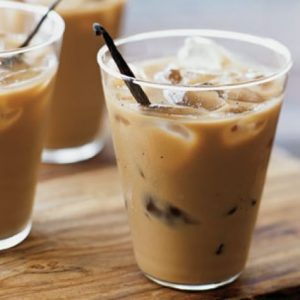That’s what I told Sara Miller of Live Science in reference to a BBC story on the safety of popular cafe drinks.
The original story Sara was asking about is from a BBC investigation into the safety of ice, iced drinks and coffee shop environments.
Samples of iced drinks from Costa Coffee, Starbucks and Caffe Nero contained varying levels of the bacteria, the BBC’s Watchdog found.
Expert Tony Lewis said the levels found were “concerning”. “These should not be present at any level – never mind the significant numbers found,” he added.
Cleanliness of tables, trays and high chairs at the chains was also tested at 30 branches. Seven out of 10 samples of Costa ice were found to be contaminated with bacteria found in faeces.
What is concerning to the expert? Fecal coliform.
I was introduced to fecal coliform when investigating wash water and vegetables at Ontario (that’s in Canada) greenhouses 15 years ago. We were looking for analytical methods to provide some feedback to producers. We sampled the water for coliform and generic E. coli – and the veggies for generic E. coli and Salmonella. We had initially started looking for coliform and fecal coliform but some smart produce microbiologists suggested the indicator group wasn’t telling folks much.
Or as Mike Doyle and Marilyn Erickson wrote in Microbe in 2006, ‘the fecal coliform assay should at a minimum be redefined to specifically qualify that it is not a reliable indicator of either E. coli or the presence of fecal contamination.’
Makes for good headlines. Doesn’t tell folks anything about risk. Or feces. Might as well sample for covfefe.
Chapman also noted that he’d be more focused on what’s going on in the coffee shops. For example, do employees wash their hands regularly and after handling potentially contaminated foods and products? Do they sanitize the equipment properly? These behaviors could be more indicative of the overall health risks the beverages and foods pose to consumers, he said.
In addition, it’s unclear what type of testing the investigators used for the BBC report. Knowing these methods would provide more useful information, Chapman said. If investigators looked only for bacterial DNA, for example, you wouldn’t know if the bacteria were alive or dead.
“We eat dead bacteria all the time,” he added, referring to the fact that dead bacteria aren’t going to make you sick.
We eat live bacteria all the time – and it doesn’t cause illness. I meant to say we eat dead pathogens all the time.
And if you want poop in your iced coffee, make it from kopi luwak.






